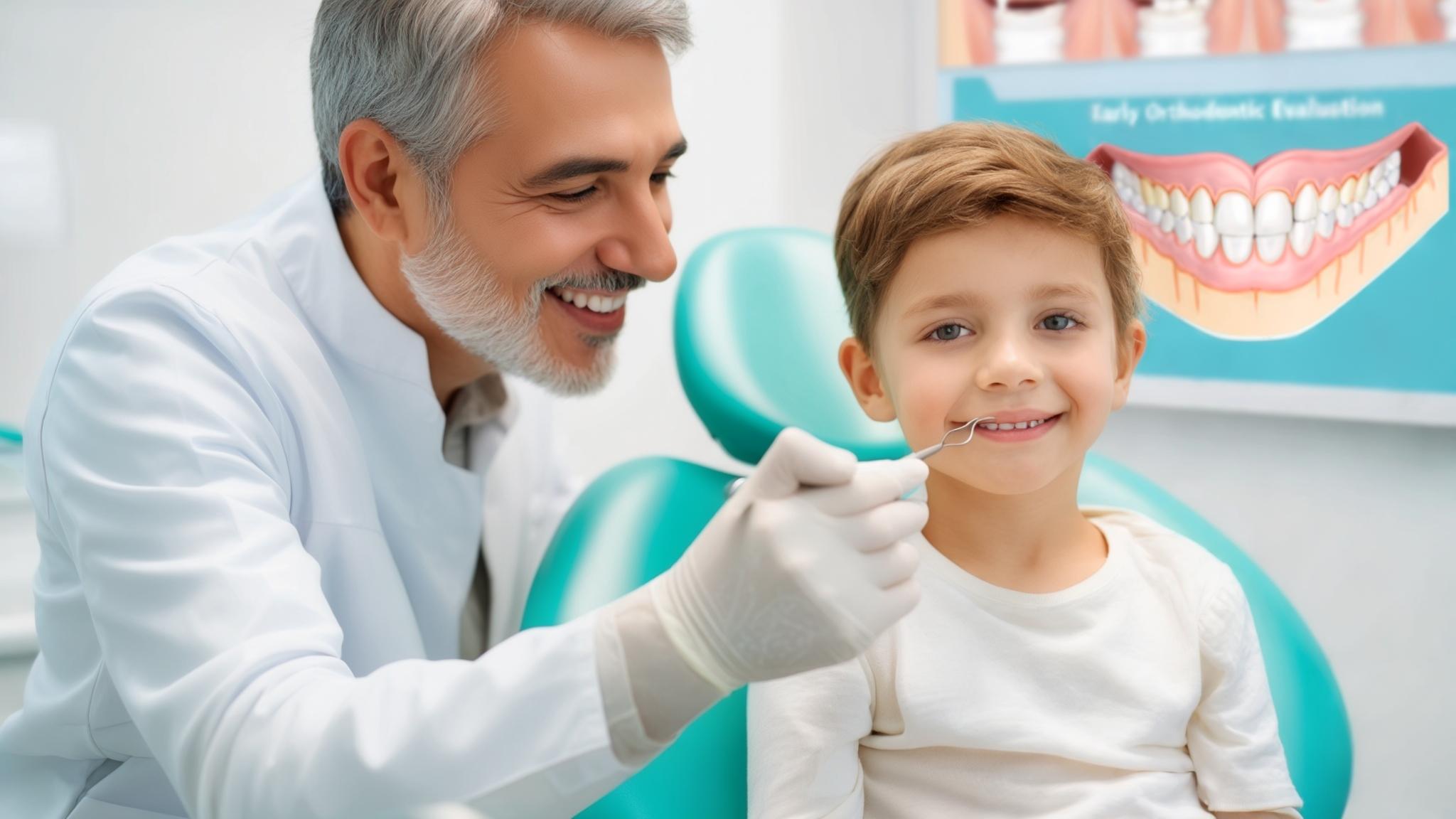Understanding Orthodontics
Orthodontics is a specialized branch of dentistry focused on diagnosing, preventing, and treating dental and facial irregularities. Think of orthodontics as the art and science of creating a healthy, beautiful smile. It involves using braces, aligners, and other appliances to correct misaligned teeth and jaws.
Importance of Early Orthodontic Evaluation
Early orthodontic evaluation is crucial because it allows dental professionals to identify potential issues before they become significant problems. By assessing your child’s dental development at a young age, orthodontists can create a proactive plan to ensure healthy growth and development of their teeth and jaws. This article will focus on why age 7 is often recommended for a child’s first orthodontic evaluation.
Understanding Orthodontic Evaluation
Definition of Orthodontic Evaluation
An orthodontic evaluation is a comprehensive assessment performed by an orthodontist to examine a child's teeth, jaws, and facial structure. This evaluation helps in determining if any orthodontic treatment is necessary.
Purpose of Orthodontic Evaluations in Children
The primary purpose of these evaluations is to catch any issues early on. Early detection can lead to simpler and more effective treatments. It’s like catching a small crack in a wall before it turns into a big problem!
Common Orthodontic Issues Identified During Evaluations
During an evaluation, orthodontists look for various common issues, such as:
- Misaligned teeth
- Gaps between teeth
- Overbites or underbites
- Crossbites
- Crowding of teeth Identifying these issues early can lead to better treatment outcomes.
The Rationale Behind the Age 7 Recommendation
Developmental Milestones in Children by Age 7
By age 7, children typically experience significant dental changes:
- Eruption of Permanent Teeth: Most children have some permanent teeth coming in, which helps orthodontists assess how the adult teeth will align.
- Growth Patterns of the Jaw and Face: At this age, the jaw is still growing, making it an ideal time to guide its development.
Benefits of Early Detection of Orthodontic Issues
- Timing of Intervention: Early evaluation allows orthodontists to monitor growth patterns and intervene at the right time, potentially avoiding more complex treatments later.
- Prevention of More Severe Problems Later: Addressing issues early can prevent them from worsening, which can save time, money, and discomfort down the road.
Research and Guidelines from Orthodontic Organizations
The American Association of Orthodontists (AAO) recommends that children have their first orthodontic evaluation by age 7. Numerous studies support this recommendation, showing that early evaluations lead to better long-term outcomes for dental health.
Common Orthodontic Issues Detected at Age 7
During evaluations at this age, orthodontists often identify:
- Crowding and Spacing Issues: Teeth may be too close together or too far apart.
- Crossbites: This occurs when the upper teeth sit inside the lower teeth.
- Overbites and Underbites: Misalignment of the upper and lower teeth.
- Impacted Teeth: Teeth that are stuck and not able to erupt properly.
- Other Developmental Concerns: Issues related to jaw growth and facial symmetry.
The Evaluation Process
What to Expect During an Orthodontic Evaluation
When you bring your child for an evaluation, here’s what typically happens:
- Clinical Examination: The orthodontist will visually inspect your child’s teeth and jaws.
- X-rays and Imaging: X-rays help the orthodontist see the position of teeth and roots beneath the gums.
- Assessment of Dental and Facial Symmetry: The orthodontist evaluates how the teeth and face align.
Role of the Orthodontist in the Evaluation
The orthodontist acts as a guide, helping parents understand their child’s dental development and what steps, if any, should be taken next.
Importance of Parental Involvement and Feedback
Parents play a crucial role in this process. Your observations about your child’s oral habits and any concerns can help the orthodontist make informed decisions.
Outcomes of Early Orthodontic Evaluations
Treatment Options Available After Evaluation
After the evaluation, several paths may be taken:
- Monitoring Growth and Development: In some cases, the orthodontist may recommend simply monitoring your child’s growth.
- Early Intervention Strategies: If issues are detected, early treatment options, such as space maintainers or partial braces, may be suggested.
Benefits of Timely Treatment
Timely orthodontic treatment can lead to:
- Improved Oral Health: Correcting alignment issues can lead to better hygiene and reduce the risk of cavities.
- Enhanced Aesthetics and Self-Esteem: A beautiful smile boosts confidence!
- Long-Term Dental Stability: Proper alignment helps ensure lasting dental health.
Conclusion
In summary, early orthodontic evaluation at age 7 is essential for your child’s dental health. It allows for early detection and intervention of potential problems, leading to better outcomes. I encourage parents to schedule evaluations for their children to ensure they have the best start for a healthy, beautiful smile. Remember, orthodontics plays a vital role in your child's overall health and well-being.
References
- American Association of Orthodontists (AAO)
- Various studies on early orthodontic evaluation and outcomes
- Resources for further reading on orthodontics and child development

